In this post I will cover the installation of an OpenShift Cluster in a single node deployment. So with that you can run IBM Cloud Pak’s for development or testing purpose. It is not recommended for production environments.
I will cover the deployment with an VM hosted in VMware Workstation with the installer-provisioned infrastructure (IPI) installation method. The VM should have the following specifications.
Minimum:
8 vCPU core | 16GB RAM | 120GB storage
Recommended:
12 vCPU cores | 24GB RAM | 150GB storage
Now go to the Openshift console https://console.redhat.com/openshift/ and create a new cluster. If you do not have an account create one. I created a cluster called „ocp“. The cluster is available for 60 days if you do not have a valid subscription. As IBM Cloud Pak’s have a valid entitlement for OCP included you must complete the tasks in the following link BEFORE the installation of OCP.
https://www.ibm.com/docs/en/cloud-paks/1.0?topic=clusters-installing-ocp

Give the cluster a name and a base domain and select the required OpenShift version.
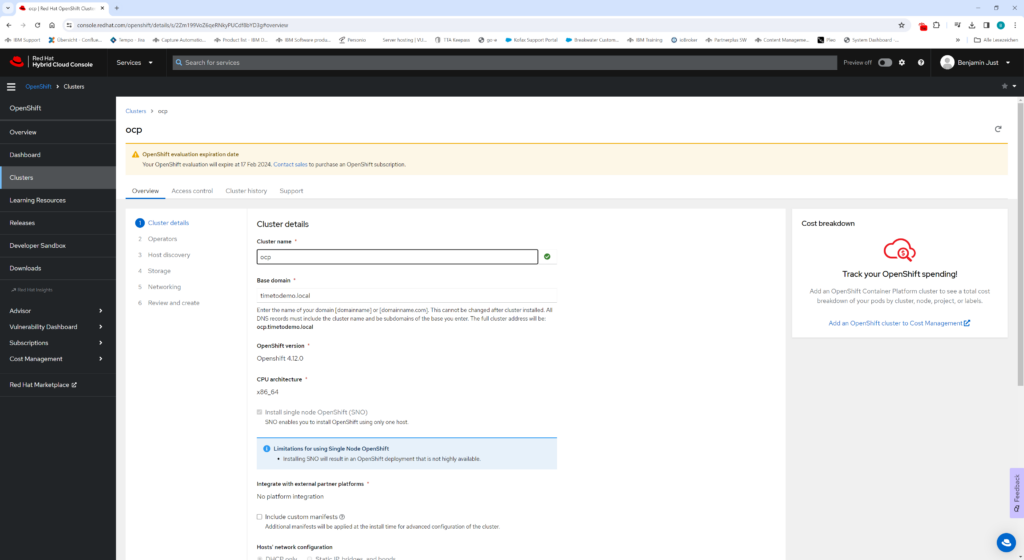
In the Operators menu you can leave all unselected.
Now you need to create the ISO image that is mounted to the VM afterwards in the „Host Directory“. Click on „Add host“ and pass a SSH pulic key to generate the ISO.
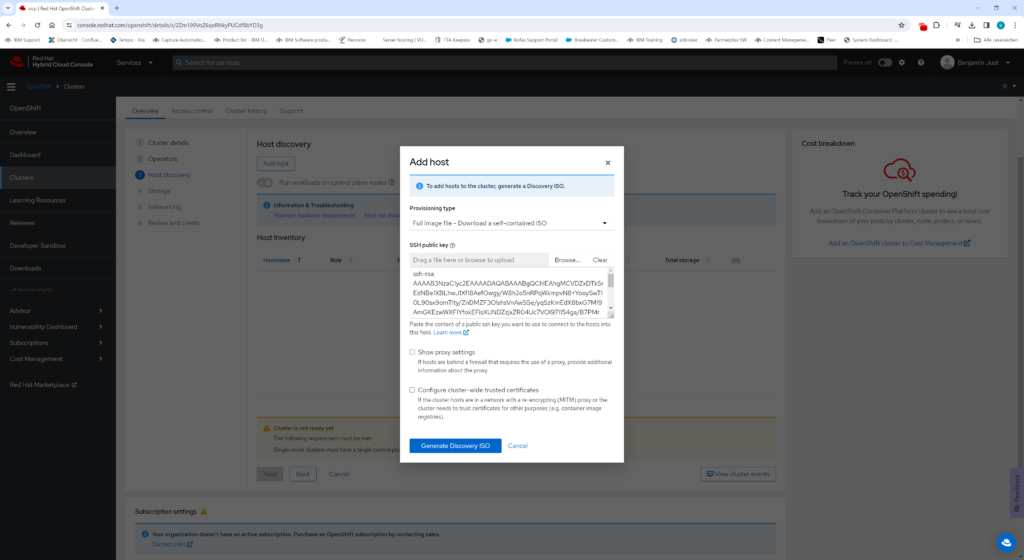
You can create the SSH public key with openSSH or just on another Linux machine with „ssh-keygen“ command.

Paste the content of the id_rsa.pub file in /root/.ssh folder in the public key section of the „Add host“ menu.
Now mount the downloaded ISO file to the created VM and start it. Now you should see this hist in the OpenShift console.
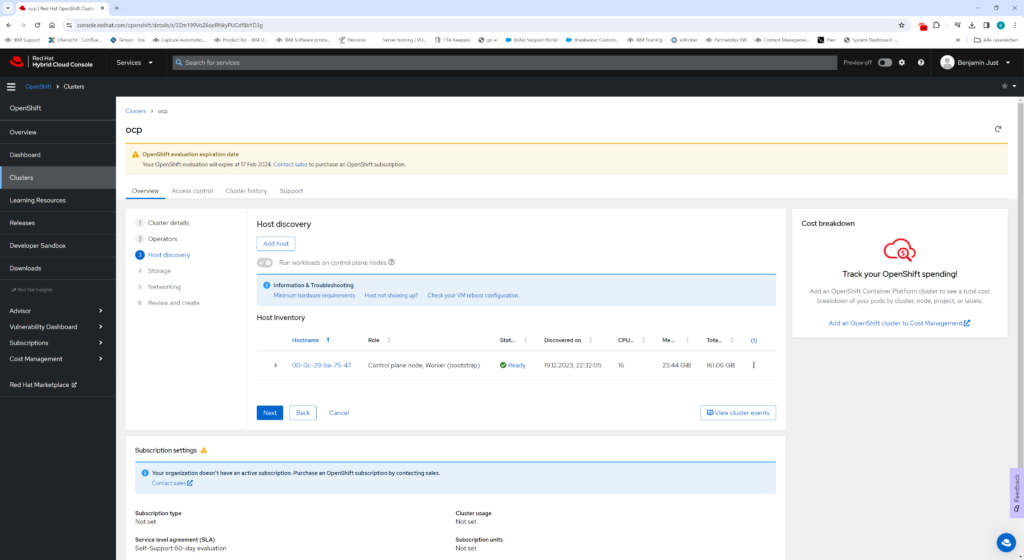
Now check if the storage is ready.
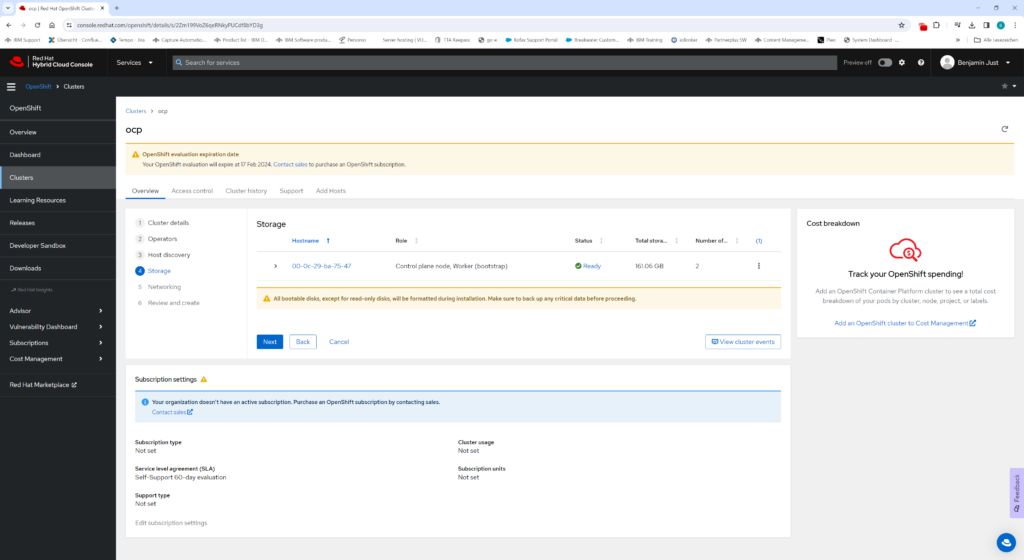
In the network section make sure that „use the same host discovery SSH key“ is selected.
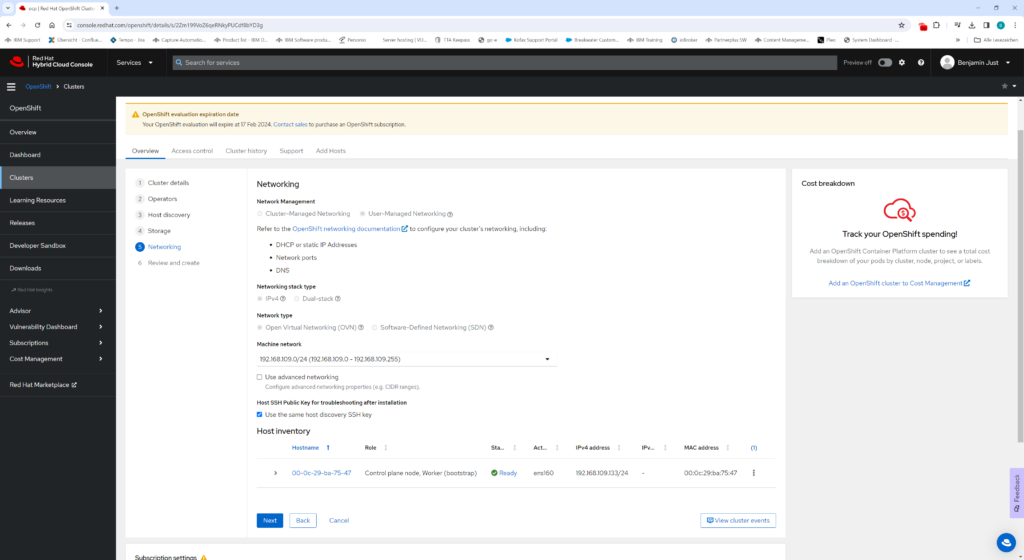
Now install the cluster. Depending on you setup this could take arount 30 – 40 minutes. So take coffee in this time :=).
After the installation has completed you can access the console of you OCP cluster. By default the link should not work. You will first need to add the adresses in you local hosts file or if you have in your DNS server. Click on „Not able to access the Web Console?“ And you will get the required entries.
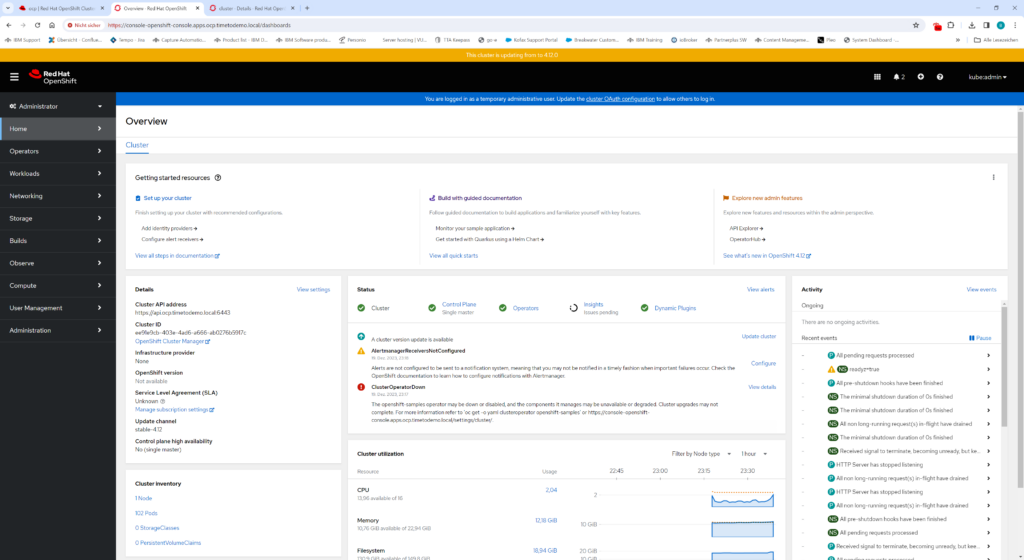
Also save the kubeconfig and store it at a safe place.
As last point you should also install the OpenShift CLI (oc) from https://access.redhat.com/downloads/content/290/ver=4.14/rhel—9/4.14.6/x86_64/product-software

